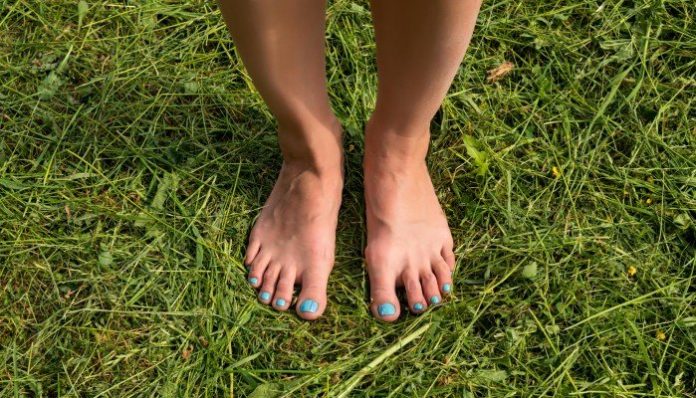In today’s modern world going barefoot seems to be the least popular way to travel on foot. People are embarrassed of their feet, and afraid of contacting parasites, and potential injury. There’s not time like summertime to go barefooted it develops muscles in the leg, foot and ankles and hips, and when compared to the restrictive or ill-fitted shoes the public wears, it’s a good thing.
Let your toes wiggle about
Soft sand is healing and gently, lessens callouses. The warm sand between your toes reminds you to be sensitive to your surroundings. Your feet get to stretch out and absorb the sun’s rays killing germs and bacteria, and injury is not possible if you are keeping any eye out for glass or potholed surfaces. You do this when you walk with shoes on naturally.
Going barefoot is healthier when it comes to athlete’s foot
It’s a fungus among us. Yeast in the body causes the problem. Any area alive or not-alive, builds up mold when left in an air tight, enclosed wet space for hours at a time. Going barefoot allows the foot to dry completely and sunshine get the circulation flowing and healthy’s up the foot.
Are those barefeet parasite free
In today’s modern world you are more apt to get parasites from the food you eat than to catch them from going barefoot. Hookworms, parasitic worm infection, is the second most common form of infection from eating food, after food poisoning, according to the Center for Disease and Control CDC. Food used to only come locally, before mass long distance transit of shipping food from other countries and other parts of the US became a regular issue. Wash all produce.
Sanitation from contaminated food source is a constant issue. Food workers not wearing gloves, and unknowlingly have parasites can pass it on to anyone eating the food. In neglected tropical areas sometimes the health department will treat the community by mass dosing medication administration and chemotherapy is used.
Hookworm is spread in the feces of an infected human or animal
If the person or animal defacates outside or the feces is used as fertilizer, eggs are deposited in the soil. They mature and hatch, releasing larvae, and the larvae mature into a form that can penetrate the skin of human. The parasites are microscopic, you won’t be able to see them with the naked eye.
Warm, moist tropical climates with poor sanitation
Hookworms are spread in the infected feces of human beings and animals. Where sanitation is poor you are at risk, meaning you must come in contact with the contaminated soil, around barns and stables of farm animals. Farm animals are normally treated for parasites through their feed, especially if the will be taken to market for sale, food grade diatomaceous earth is added to the food, (can be used for pets and humans) or through vaccination. Most people do not go barefoot in these types of areas, but in some foreign countries where outdoor bathroom habits are the norm you are at risk if you are barefoot, also known as “travelers’rash.”
This also makes it necessary to clean up after your pet, especially if the pet is not being treated for worms by receiving first receiving their puppy shots, and intermittent ongoing treatment throughout their life. Keep your pet away from the feces of other animals.
Parasites
In the world there are 540-760 million people infected with hookworm. Hookworm was once widespread in the United States, especially in the southeast region, but improvements in living conditions and sanitation have greatly reduced infections.
How to protect your barefeet from parasites
After a day going barefoot, wash your feet with soapy water and rinse. If you feel you have been in an area like the one listed above wash as soon as possible.
If you think you have a parasite, your doctor will be able to tell by a stool sample. Medication is available through the doctor (generally treated and taken for 1-3 days) and naturally there are foods and herbs that cleanse the body of parasites which you can use as you feel needed.








